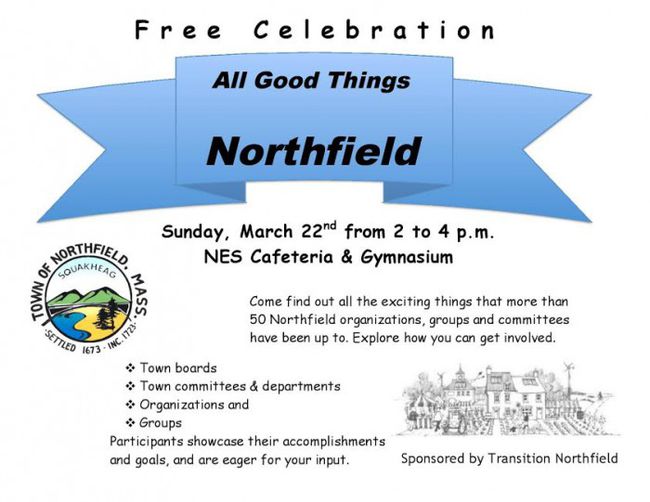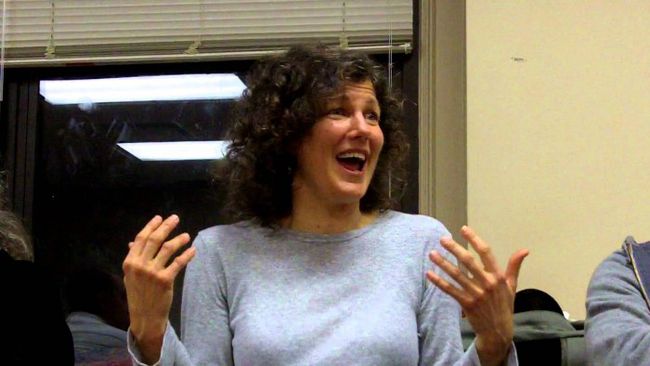26 May 2015
Tina Clarke: Community Engagement & the Transition Principles
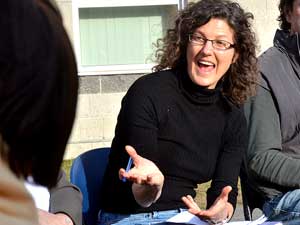
Today’s guest blog on the theme of community engagement is by Tina Clarke, a community organiser and consultant in the US. She is also a Certified Transition Trainer who is part of the international training team and a community resilience consultant, as well as being one of the trainers behind Transition Launch Online. She is also involved with Transition Northfield:
“As a professional community organizer and consultant, I was intrigued, in 2008, to see the list of Transition Principles. As I began to work with the Transition model, I was impressed by the principles that had been chosen. Over the past 35 years in social change movements, I have seen few such “neutral” and useful guidelines for engaging the community.
Here are some reasons that I encourage Transition Initiatives to use the Transition Principles when planning events, activities, projects and other kinds of outreach.
Transition Town Totnes inspired a global movement of local action based on fun instead of fear! The eight Transition Principles help you create fun, welcoming activities that bring people together to connect, support each other, and get practical work done. The Transition Principles help you choose projects and organize events that are more likely to engage a broader number of people.
 The Transition Principles combine many key elements of successful community involvement. For example, all communities, organizations, cultures and social movements depend upon principles – a set of values and good intentions – that help the community decide what to do and how to work together. Good ideas and fun events can bring people together, but shared, valued principles keep people coming back. Events that promote a particular business, or seem focused on attracting “customers” or “members” may eventually start to lose people if it seems that the business or organization’s goals of “getting” something from people is more important than contributing to the greater good. (Image, right, shows Transition Northfield’s first birthday party, in 2011).
The Transition Principles combine many key elements of successful community involvement. For example, all communities, organizations, cultures and social movements depend upon principles – a set of values and good intentions – that help the community decide what to do and how to work together. Good ideas and fun events can bring people together, but shared, valued principles keep people coming back. Events that promote a particular business, or seem focused on attracting “customers” or “members” may eventually start to lose people if it seems that the business or organization’s goals of “getting” something from people is more important than contributing to the greater good. (Image, right, shows Transition Northfield’s first birthday party, in 2011).
A good set of principles help you communicate the meaning and purpose of the work. Ultimately, generosity attracts more interest than self-interest. Respect, collaboration and meaningful values are more likely to be successful in building community.
Here’s a few tips on how to use the Principles of Transition as a tidy, handy guide as you plan projects and outreach:
1. Positive Visioning
“Our primary focus is not campaigning against things, but rather on positive, empowering possibilities and opportunities.”
By organizing activities and events that inspire and deepen a positive vision of the future, you not only attract more people. You also avoid getting stuck in negative attitudes that turn people away. Transition’s focus on positive action helps you connect with a much broader range of neighbors than would respond to a “sustainability” or “environmental” event alone, or a “family” event, or an “Inner Transition” event alone.
2. Help People Access Good Information and Trust Them to Make Good Decisions
“Transition Initiatives … recognise the responsibility to present this information in ways which are playful, articulate, accessible and engaging, and which enable people to feel enthused and empowered rather than powerless…The messages are non-directive, respecting each person’s ability to make a response that is appropriate to their situation.”
Everyone needs to feel respected. We each need to be seen as able to come to good, wise conclusions. Sharing information by saying, “I find this interesting” or “I am wondering if you might want to know about some information I received” shows deep respect for other peoples’ intelligence and their freedom to come to their own conclusions. Respect and welcoming of diverse points of view is essential to engaging your community.
3. Inclusion and Openness
“Successful Transition Initiatives need an unprecedented coming together of the broad diversity of society. They dedicate themselves to ensuring that their decision making processes and their working groups embody principles of openness and inclusion…[There is] no room for ‘them and us’ thinking.”
“Bring your passion and make that…contribution – if there isn’t a project working in the area you are passionate about, create one!!”
Embracing diversity – listening and learning from everyone in your community – is a foundation of broad engagement and community-building across differences. Make yourselves learners. Go to others rather than expecting them to come to your events. Ask questions, participate in other communities, and ask for advice about how to organize events that will feel welcoming to diverse sectors of the community.
4. Enable Sharing and Networking
Instead of telling people what to do, or trying to recruit them to do a plan you or others have decided, Transition emphasizes sharing information, networking, and seeing what emerges from friendly connections between people who live near each other.
Sometimes it’s hard to get existing local groups and leaders to accept how important sharing and networking is to community-building. Organize fairs, Open Space Technology conversations, forums, potlucks and other group “mingling” and small group conversations to help everyone realize that “no one is telling anyone what to do” – we’re all curious to see what practical projects emerge.
5. Build Resilience
“Transition initiatives commit to building resilience across a wide range of areas (food, economics, energy etc) and also on a range of scales (from the local to the [global])…”
Our goal is to build local resilience. We’re not taking on a large area, nor trying to get hundreds of thousands of people to do what we think they should. Instead, we focus on connecting with our neighbors.
Many of your neighbors will be interested in resilience because it is a broad goal that includes many kinds of projects and activities within it. Your proximity brings you together for mutual benefit.
The key to engagement is stressing the open-ended exploration that is Transition. When you talk to people, note that “Transition is a verb”: we do it; we decide what and how to do it.
‘Most communities in the past had – a generation or two ago – the basic skills needed for life such as growing and preserving food, making clothes, and building with local materials.”
To engage lots of different kinds of people, organize lots of different kinds of practical, hands-on events and projects. Stretch yourself into new arenas!
6. Inner and Outer Transition
“Transition thrives because it enables and supports people to do what they are passionate about, what they feel called to do.”
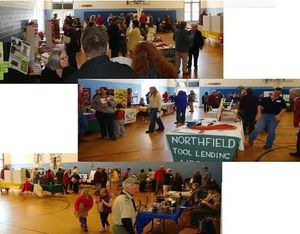 I encourage you to read about this principle, at the Principles link, and on the TN.org website. Inner Transition reminds us that the foundation of resilience is our relationships with the people in our community. Perhaps some people don’t like each other. Perhaps people don’t know what to say in order to connect. In addition, expect that local political issues will inevitably arise and cause people to feel alienated from each other. Learning how to stay connected and communicate with respect is a great skill that lots of people still need support and tolerance to learn. With a bit of humor, and some practical and social benefits when we spend time together, people often find some interests in common.
I encourage you to read about this principle, at the Principles link, and on the TN.org website. Inner Transition reminds us that the foundation of resilience is our relationships with the people in our community. Perhaps some people don’t like each other. Perhaps people don’t know what to say in order to connect. In addition, expect that local political issues will inevitably arise and cause people to feel alienated from each other. Learning how to stay connected and communicate with respect is a great skill that lots of people still need support and tolerance to learn. With a bit of humor, and some practical and social benefits when we spend time together, people often find some interests in common.
Then, connected on our positive, practical projects, we can focus on helping each other be ready and be proactive influencing our future rather than letting it happen to us.
These ideas make sense to everyone. As you change your focus from climate crisis to a focus on building collaboration with your neighbors, people will be curious. Do your inner work so you’re ready to greet them with a smile and warm interest in who they are and what inspires them!
7. Transition makes sense – the solution is the same size as the problem
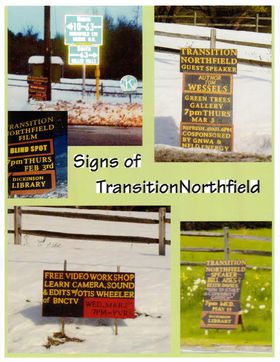 Most of us experience powerlessness at times – feel overwhelmed by the scale of the challenge. Transition encourages us to work on the problem in friendly, task-oriented, small groups. These social connections, and feelings of accomplishment, help keep us going. The smaller tasks make it easier to make visible progress. By keeping the work more local and practically useful, we engage more of our neighbors.
Most of us experience powerlessness at times – feel overwhelmed by the scale of the challenge. Transition encourages us to work on the problem in friendly, task-oriented, small groups. These social connections, and feelings of accomplishment, help keep us going. The smaller tasks make it easier to make visible progress. By keeping the work more local and practically useful, we engage more of our neighbors.
8. Subsidiarity: self-organisation and decision making at the appropriate level
“[T]he intention of the Transition model is not to centralise or control decision making, but rather to work with everyone so that it is practiced at the most appropriate, practical and empowering level…”
There’s an old bit of wisdom from research and praxis on community involvement: if you want people to participate, they need to have the power to decide, create and do, in their own way. No matter how wonderful your top-down idea is, it will fail to gather the support it could if it was a conversation, a “bottom-up” process, where together we engage, and support, each other.
© Tina Clarke, 2015, TinaclarkeOZ@gmail.com, www.BeyondDependency.org
